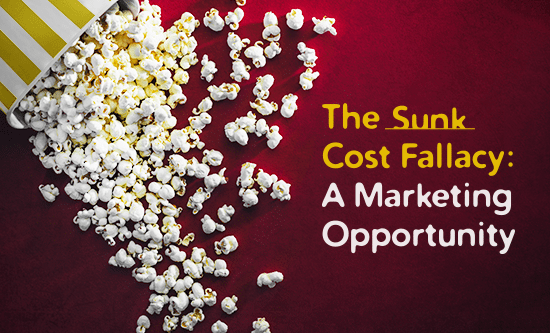Have you ever gone to the cinema psyched up to watch the latest big movie sequel only to realise ten minutes in that it’s not a patch on the first film? A few of us might cut our losses and leave straight away. But for most of us, however, instead of ditching the popcorn and soft drink, we would endure the entire film even though we know it’s going to disappoint us. This seemingly pointless act of stubbornness is actually known as the ‘sunk cost fallacy’.
Put simply, the ‘sunk cost effect’ is any expenditure we’ve already made and that we’re unable to get back. Our expenditure could be financial, emotional or time-related, but in all cases, this is a phenomenon that affects us in our everyday decision-making.
The reason for us acting this way is because we have a tendency to take into consideration sunk costs for almost every new decision we make. As we’ve already invested time, energy and money into a previous decision, we feel obliged to see that initial decision through until the end. Whether it’s a relationship, an online survey, or the study of a new language. The fact that we’ve already spent time and/or money will significantly influence our future decisions around these things.
The good news is that by understanding the human psychology behind sunken costs, we are better placed to predict and influence customer behaviour. This can be done in three key ways:
- Continually remind customers of their ongoing relationship with your brand. This works particularly well with frequent flyer programs and other loyalty offerings. For example, using phrases such as “a valued member since 2003” will further instil a sense of loyalty and increase the likelihood that the customer will continue using a certain product.
- Remind customers of their initial investment and provide a prompt for ancillary purchases. For example, when a customer orders a pizza online, adding the message “treat yourself to dessert for only another $5” can dramatically increase your overall sales figures.
- Suggest customers that there is only minimal effort required to complete a purchase e.g. on hotel booking websites phrases such as “finalise your booking with just two more clicks” are frequently utilised.
Effectively tapping into the sunken cost bias can increase customer engagement and subsequent conversions. By prompting customers to recollect their investment, it is likely that they’ll continue their engagement with your brand.
However, it must also be remembered that this tactic is not a ‘golden ticket’ and should be combined with a range of other approaches as part of a wider marketing strategy for it to be most effective.
 By Helena Woo, Strategic Customer Engagement Director at DA.
By Helena Woo, Strategic Customer Engagement Director at DA.
With over 25 years of experience in data-driven marketing, she is constantly looking for ways to innovate, leading the strategic vision and value proposition for our clients. Helena has helped clients across industries achieve their marketing goals, marrying data and technology to deliver great customer experiences.
[pardot-form id=”46577″ title=”Blog Sign up test1″]
